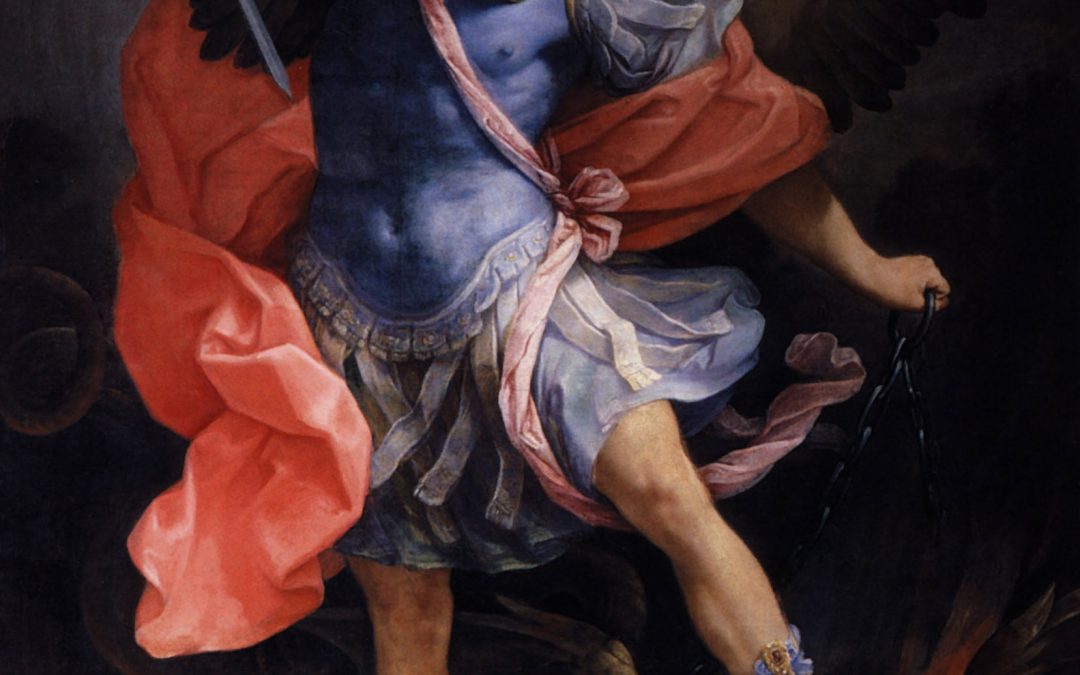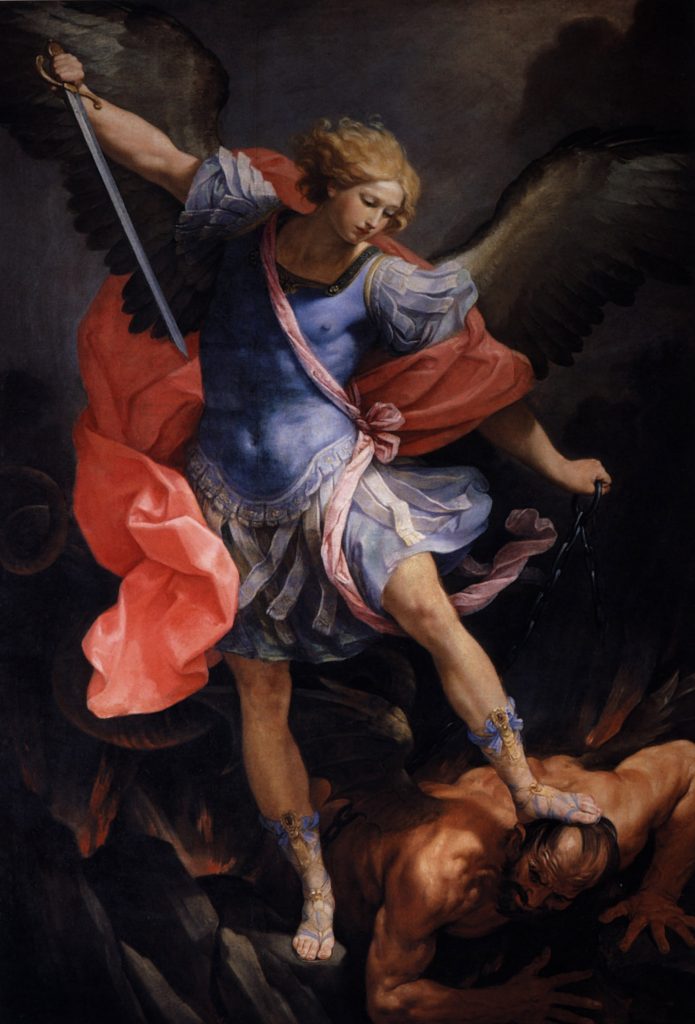I did two posts on Guido Reni a while ago, one on St Joseph with the Infant Jesus, and another of the Portrait of Cardinal Bernardino Spada, which I think I saw in Rome. One (former) Cardinal I saw with Charlotte, for sure, was the Velasquez painting of the Portrait of Pope Innocent X Pamphilj, which I will do a post on separately. This painting is located in Santa Maria della Concezione de Cappuccini, Rome, Italy.
Revelation 12:7-9(New Revised Standard Version Catholic Edition)7 And war broke out in heaven; Michael and his angels fought against the dragon. The dragon and his angels fought back, 8 but they were defeated, and there was no longer any place for them in heaven. 9 The great dragon was thrown down, that ancient serpent, who is called the Devil and Satan, the deceiver of the whole world—he was thrown down to the earth, and his angels were thrown down with him.
It is said that St Michael’s origins are from Zoroastrianism, a monotheistic religion of ancient Persia which believed a starkly dualist faith in which gods of light waged eternal war on gods of darkness. But this is probably not true. Saint Michael was an angel mentioned in the Old Testament several times. He is the guardian prince of Israel and is responsible for the care of Israel in the Old Testament, the chief of the archangels, and is mentioned in the New Testament in the Book of Revelations, as above.
This painting of Saint Michael defeating Satan is quite evocative. The colours are astonishing. It is done in the baroque style. St Michael is shown triumphing over a disconcerting looking devil. He is wearing brightly coloured armour and has raised a sword over the defeated devil. The contrast in the bat wings of the devil and the full clean wings of St Michael are striking. Similarly, St Michael’s soft clean floating hair and serene demeanour as contrasted with Satan’s receding hairline and scrunched up pained face are quite marked. This is a glorious depiction of good triumphing over evil. Charlotte and I will mark this one on our list next time we visit Rome.
Guido Reni’s resplendently theatrical depiction of St Michael, part Roman soldier, part ballet dancer, was painted in 1635 and can be seen in the church of Santa Maria della Consolazione in Rome. The picture is a beautiful example of Reni’s late style, which was repeatedly admired by his contemporaries for what they called “grazia” – a critical term much used by writers in the Baroque period, and one with dual implications. The serene figure of St Michael, effortlessly victorious over a grotesquely grimacing Satan, embodies aesthetic grace while also evoking the religious… Andrew Graham Dixon


